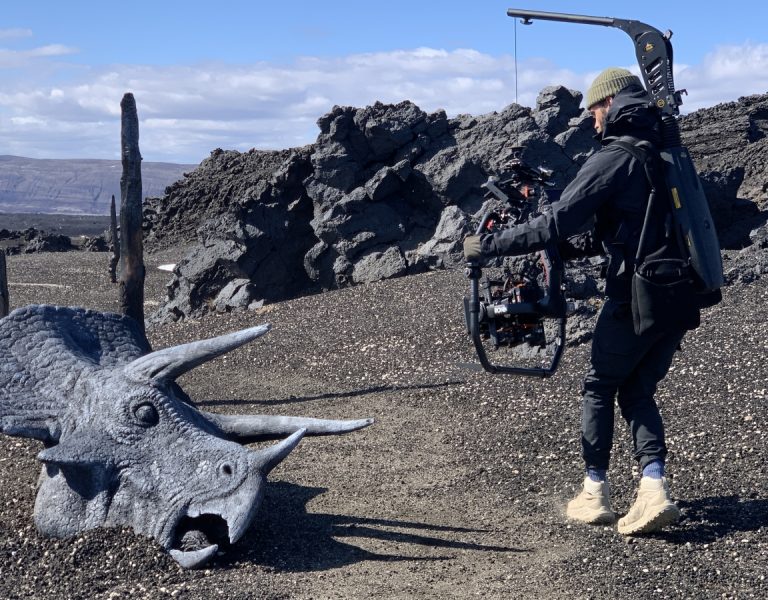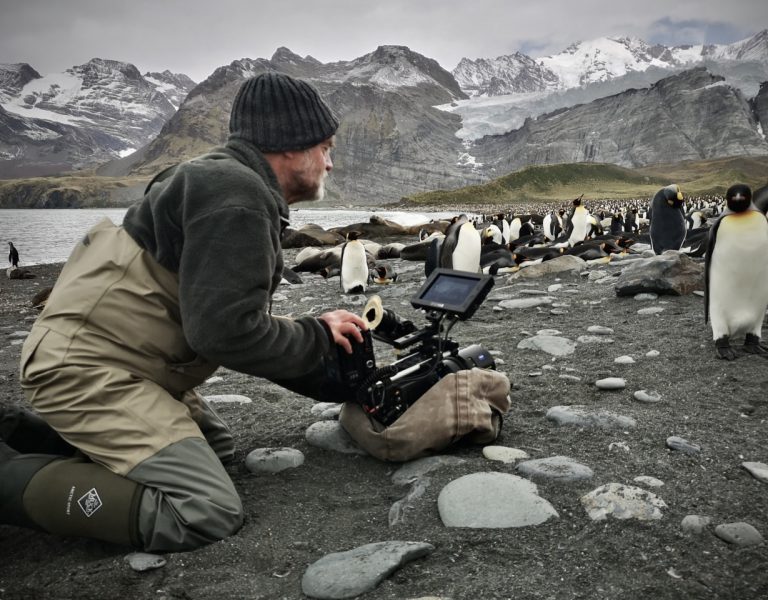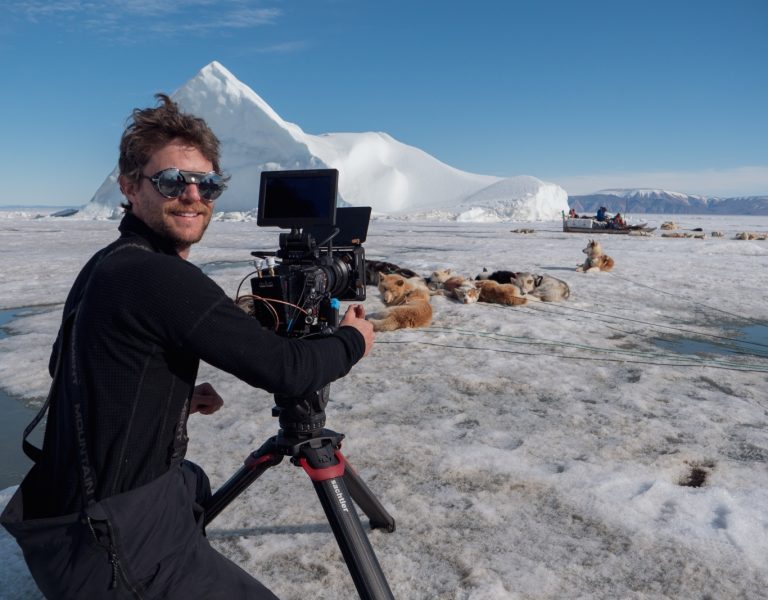THE ROAD WILDLY TRAVELED
The wilderness is filled with paths; deer trails, hikes across mountains or into rainforests, or anywhere else leading, as Shel Silverstein once wrote, “where the sidewalk ends.” But if you want to wield a camera and document all those non-human spaces and their inhabitants, where does the trailhead start for your journey as a wildlife cinematographer?
Libby Penman, who shoots and presents wildlife footage, including the BBC’s Back from the Brink, recounts “growing up in the town of Kirkcaldy, in Scotland, where there isn’t even a cinema, (so) a career as a filmmaker seemed completely impossible […] Even when I told my school I wanted to be a filmmaker, they had never had anyone who was trying to apply and go to uni for TV at this point.”
Her other passion at the time was skateboarding with her twin sister, though a broken arm led her “into filmmaking and produced YouTube videos at the skatepark because I couldn’t skate with the cast on.” Eventually, both a portfolio of skate footage, and a dissertation on Kubrick, led to a university acceptance and “the rest is history,” though what Penman terms “the wildlife side of things” didn’t really pick up until about four years ago. “There are no wildlife Masters degree courses in Scotland but I received the Dewars Art Scholarship in 2020 which meant I could go and study wildlife and wildlife filmmaking.”

Like Penman, Paul D. Stewart grew up “in a not especially wild area (which) meant I couldn’t see a lot of it for myself,” though it did lead to predilections both for biology and “collecting large insects”. But it was when he saw Sir David Attenborough’s Life on Earth that “the way was then clear, I would be a wildlife filmmaker.”
That particular path led to starting an award-winning production company in Oxford, specialising in science and natural history. Stewart’s projects now range from writing, producing, and directing shows like BBC and Apple TV+’s Prehistoric Planet, to Planet Earth II for the Beeb, and projects like Our Planet and Dancing with the Birds for Netflix – along with many more.
The path from watching Sir David to running a production house started, however, with the realisation he couldn’t afford a kit, so he decided he “would learn my trade on scientific expeditions. I applied to do a doctorate, figuring out that if I chose a scientist with a track record in television collaboration it might help. So I got a grant to work at Oxford with Professor David Macdonald (Night of the Fox, Meerkats United) to do a Doctorate on badgers.”
Stewart also found himself working on a dinosaur-themed BBC series, Velvet Claw, even “before I started the D.Phil. After the Doctorate I got one of the BBC NHU camera bursaries, training with such camera naturalist heroes as Simon King. I have seen the places and things that I dreamt of seeing as a child (and) even discovered that Attenborough is as kind and interesting as I ever hoped!”
Lauded wildlife DP Sophie Darlington, whose work is seen on NatGeo’s current Queens, and includes Netflix’s Emmy-winning Our Planet, the BAFTA-awarded The Hunt, also “went far” to launch her own career trajectory – heading not to Oxford, but all the way to Tanzania, to pursue a dream of wildlife filmmaking.

Her “route taken was not a traditional one; running a tented camp in the Serengeti.” Though that camp “belonged to wildlife filmmaking legend, Hugo van Lawick (who) had eight Emmys under his belt for films capturing the world-famous primatologist, Jane Goodall.”
Nonetheless, it still took “a year before I was allowed to step into any kind of camera assistant role but I got there by observing, being inquisitive and also tenacious. It was an extraordinary time that culminated in my first film The Lion’s Share being nominated for cinematography at Wildscreen.”
Norwegian filmmaker Asgeir Helgestad, has, like Stewart, his own production company, dedicated to “natural world storytelling”, with collaborations ranging from the NRK, to the Smithsonian Channel, France TV, and the ubiquitous BBC.
“When I finished high school, there was nothing I wanted more than to become a nature photographer and a filmmaker,” he says. But the 64 kroner question was “how to do that?” For him though, the path led not to the expansive Serengeti, but the much more restrained topography of printed circuits, as he “started studying electronics (and also) bought myself a 16mm film camera, a Beaulieu with an Angénieux 12–120 mm lens. I had a mount for Canon optics as well. This was very expensive to use as a student.” But the first ten minutes of film he exposed “resulted in five minutes on national television. It was a good start.”
He still calls the camera “probably the best teacher I ever had, because I had to think carefully before filming anything,” and also “realised that I didn’t want to become an electronics engineer”.
Winning wildlife photography awards in the early ‘90s helped bolster his nascent confidence, though practicalities led to him selling his film equipment when family came along, as he also discovered that “family life was not compatible with staying out for months waiting for the very best photos.”
However, the ensuing video era allowed him to film adverts which “also gave me the opportunity to buy a RED camera in 2012, which was a complete game changer. […] RED thought my pictures were so good that they made a portrait film on me from Yellowstone in black-and-white. It is still the most watched film RED made in [that] series.”

Shifting from the North Sea to the Mediterranean, director and cinematographer Paolo Sodi considers his native Italy “the most beautiful country in the world, and I have visited many in recent years, but the work of a documentary filmmaker here is not at all simple.” He finds that documentaries “in cinemas and on television are very rare” there, so Sodi proceeds with what he describes as the challenge “to bring to my country a language that mixes telling nature stories with a filmic narrative.”
“In many other places in the world it is a language that is already used and successful.”
Justine Evans, whose work includes the current Queens, PBS’ Nature, Disneynature’s In the Footsteps of Elephant, and a shared Emmy nomination for an earlier season of Survivor, among her many credits, considers that how you structure that narrative is critical: “You only have to spend a little time with elephants, for example, to feel a deep sense of humility,” noting that “the more intelligence you find there is,” one of the best ways “to capture (and show) that is in a relatable human storyline.”
Her own storyline took her to film school, in Bournemouth, and while being schooled in “drama, mainstream documentaries, ads, promos – all those genres,” the Royal Society for the Protection of Birds asked if someone there was interested in filming “the Dartford Warbler – a specialist species that has adapted to that ancient land”.
That went well enough that the RSPB asked for another film on illegal bird trades, after graduation, requiring Evans to go “sort of undercover” following a particularly rare species of cockatoo, after which she “managed to (become) a camera assistant with a wildlife cameraman”, and was on her way.
As for what that pathway looks like for wildly inclined cinematographers in 2024, Darlington says “the tools, for some, are within reach. Learning to film, fly a drone, edit and grade are possible without having hugely expensive gear. And also, most importantly, there are now improved resources to help open doors for those who haven’t traditionally had access to wildlife filmmaking.” She cites Queens as an example, saying “from the outset our aim was to mentor and upskill women, and we did.”

–
Words: Mark London Williams

























